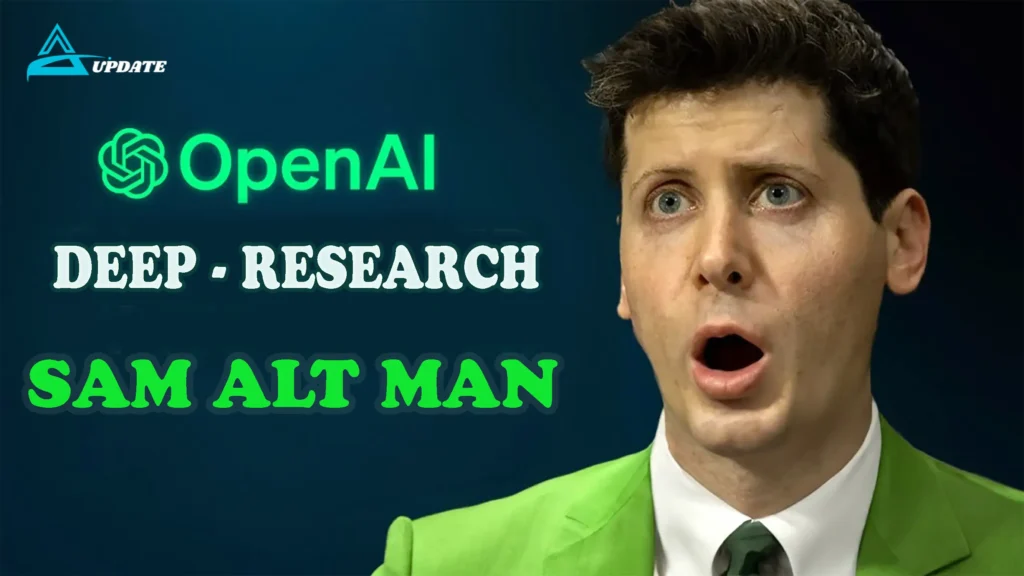In the rapidly evolving landscape of artificial intelligence (AI), OpenAI has emerged as a trailblazer, pushing the boundaries of what machines can achieve. At the heart of this innovation lies OpenAI Deep Research a commitment to exploring complex AI challenges, developing groundbreaking models, and ensuring ethical advancements. This blog post delves into the significance of OpenAI’s research initiatives, key focus areas, methodologies, real-world applications, and the ethical considerations shaping their work.
The Importance of Deep Research in AI
Deep research is the backbone of transformative technologies. For OpenAI, it’s not just about incremental improvements but solving foundational problems that unlock AI’s potential. Deep research enables:
- Breakthroughs in Capability:
From language comprehension to image generation, deep research drives the development of models that mimic human-like reasoning.
- Ethical AI Development:
Proactive research helps identify and mitigate risks, such as bias or misuse, ensuring AI benefits humanity.
- Long-Term Vision:
OpenAI’s mission to achieve Artificial General Intelligence (AGI)—systems that outperform humans in most tasks—relies on sustained, rigorous exploration.
By prioritizing deep research, OpenAI aims to create AI that is powerful and aligned with human values.
Key Focus Areas of OpenAI’s Deep Research
OpenAI’s research spans diverse domains, each contributing to a cohesive understanding of AI’s capabilities. Below are their core areas of focus:
1. Natural Language Processing (NLP):
OpenAI’s GPT (Generative Pre-trained Transformer) series revolutionized NLP. Models like GPT-3 and GPT-4 demonstrate unprecedented text generation, translation, and reasoning abilities. Key advancements include:
- Few-Shot Learning:
Models perform tasks with minimal examples, mimicking human adaptability.
- Contextual Understanding:
Improved grasp of nuance, tone, and intent in text.
- Multimodal Integration:
Combining text with images or code for richer outputs.
2. Reinforcement Learning (RL)
Reinforcement learning, where AI learns through trial and error, underpins projects like OpenAI Five (which defeated professional Dota 2 players) and Dactyl (a robotic hand manipulating objects). Breakthroughs include:
- Scalability:
Training models with massive computational resources.
- Generalization:
Applying learned skills to unfamiliar scenarios.
3. Computer Vision
OpenAI’s DALL-E and CLIP models merge vision and language. DALL-E generates images from text prompts, while CLIP understands visuals in context, enabling applications in content creation and accessibility.
4. AI Safety and Alignment
Ensuring AI systems behave as intended is critical. Research here focuses on:
- Value Alignment:
Training AI to respect ethical guidelines.
- Interpretability:
Making AI decision-making transparent.
- Adversarial Robustness:
Protecting models from malicious inputs.
5. Collaborative AI
Projects like Codex (powering GitHub Copilot) highlight AI’s role as a collaborative tool, augmenting human creativity in coding, design, and problem-solving.
Methodologies Driving OpenAI’s Success
OpenAI’s research excellence stems from unique strategies:
- Cross-Disciplinary Collaboration:
Teams of engineers, ethicists, and domain experts tackle problems holistically.
- Open-Source Contributions:
Sharing tools like OpenAI Gym (for RL experimentation) fosters community innovation.
- Iterative Experimentation:
Rapid prototyping and testing accelerate learning.
- Ethical Frameworks:
Partnerships with policymakers ensure responsible deployment.
Real-World Applications and Impact
OpenAI’s research transcends labs, impacting industries globally:
- Healthcare:
AI models assist in drug discovery and medical diagnostics.
- Education:
Personalized tutoring systems adapt to individual learning styles.
- Business:
Automation of customer service, data analysis, and content generation boosts efficiency.
- Creative Arts:
Tools like DALL-E empower artists with AI-generated visuals.
Challenges and Ethical Considerations
Despite progress, OpenAI faces hurdles:
- Bias and Fairness:
Models may perpetuate societal biases present in training data.
- Environmental Impact:
Training large models requires significant energy, raising sustainability concerns.
- Job Displacement:
Automation could disrupt industries, necessitating reskilling initiatives.
- AGI Risks:
Long-term fears of uncontrollable AGI demand proactive safety measures.
OpenAI addresses these through transparency, public engagement, and collaborations like the Partnership on AI.
The Future of OpenAI’s Deep Research

Looking ahead, OpenAI aims to:
- Achieve AGI Safely:
Prioritizing alignment and controllability.
- Democratize AI:
Expanding access to tools for global problem-solving.
- Pioneer New Frontiers:
Exploring quantum computing, neuromorphic engineering, and interdisciplinary AI applications.
Conclusion:-
OpenAI Deep Research represents a bold quest to harness AI’s potential responsibly. By blending technical prowess with ethical rigor, OpenAI continues to redefine possibilities—from creative arts to scientific discovery. As the AI landscape evolves, their commitment to deep research ensures that advancements remain inclusive, safe, and transformative.
Whether you’re a developer, policymaker, or curious reader, understanding OpenAI’s work offers a glimpse into a future where AI and humanity thrive together.


3 Responses
Thank you for your sharing. I am worried that I lack creative ideas. It is your article that makes me full of hope. Thank you. But, I have a question, can you help me?
I’m really happy to hear my article gave you hope—that means so much. 🌟 Don’t stress too much about creativity, it grows the more you explore and try things. And absolutely, feel free to ask your question—I’ll do my best to help!
https://ailatestupdate.com/
Your article helped me a lot, is there any more related content? Thanks!